Are you a journalist? Please sign up here for our press releases
Subscribe to our monthly newsletter:
Learning new relations, or “rules”, between elements in the world is critical to the survival of all animal species. It allows them to recognize repeating patterns in the environment and to deduce general principles for coping with similar situations in the future. The ability of primates, humans in particular, to learn new rules is especially developed, and this enhances our capacity for making complex decisions and for planning ahead. Since our natural environment is rich and extensively dynamic, a key challenge for the brain is to distill applicable rules from the ceaseless stimuli that surround us. Extracting the features of the environment that are relevant and understanding their correct relation to one another allow us to form rules that could be applicable in future situations that might be similar, but not identical, to the scenario in which the initial learning process took place.

Although such learning processes have been studied extensively on a behavioral level, tracing them as they unfold in the brain in real time has remained a significant challenge. A new study published by Prof. Rony Paz, Prof. Elad Schneidman and Dr. Yarden Cohen of the Neurobiology Department at the Weizmann Institute of Science develops and offers an innovative approach to studying rule learning that combines computational modeling and live recording of neuronal activity in the brain.
The researchers used a learning task that is based on the classification of small patterns, composed of several white or black squares, which are organized in different layouts. For every experimental session, the researchers define a rule that divides the patterns into two groups: for example, one group in which the right-most square is black, and another group where it is white. In every iteration, the participants learn their task through trial and error – they are presented with one pattern at a time, and they must then decide to which one of the two groups it belongs; a successful iteration is rewarded. Gradually, participants may learn the current session’s underlying rule, or some approximation of it. (In a small number of cases, their performance did not improve during the session, reflecting a failure to learn.)
An effective learning task: relatively basic patterns that can be used to develop a huge variety of rules – from simple to complex
This learning task turned out to be very effective: the play stones – the patterns – are relatively simple, but they can be used to develop a huge variety (in the thousands) of rules, with some being simple, while others are more complex. These patterns have an additional important advantage: all rules, namely all partition possibilities of the patterns into two groups, can be represented in geometrical terms. The spatial representation of the data can be described as a multidimensional cube, where each rule is represented by a vector – an arrow pointing in a specific direction within the cube.

During the experiment, the researchers recorded neuronal activity from two areas in the brain that are known to participate in the process of rule learning: the dorsal anterior cingulate cortex (dACC) and the striatum. The researchers measured and quantified the response of each neuron in relation to the displayed pattern. By employing this method, the researchers were able to represent the activity of neurons as vectors in the same multidimensional cube where the rule that is being learned is represented as well.
The fact that the neuronal activity and the rule being learned are represented in the same space enabled the depiction of the learning process at a single-neuron resolution and, importantly, in real time, while the subjects were learning. Whereas every rule is represented by a static vector in a specific session, the activity of each neuron is indicated by a series of vectors that correspond to its instantaneous activity and that therefore move to different locations in space as the learning gradually occurs. The further ahead the learning process is, the closer the vectors representing neuronal activity are to the location of the vector representing the rule.
Coordination between the two brain regions is necessary for an effective learning process
Using this approach, the researchers were able to conclude that neurons in the dACC “learn” by engaging in a process of trial and error, in which they gradually “venture” closer to the rule. In comparison, the vectors representing neurons recorded from the striatum elongate as learning progresses, which implies that they increase their confidence level, signaling that the brain had indeed found the correct rule.
The researchers furthermore discovered that these processes, which take place in the two brain regions, are coordinated: neurons in the striatum strengthen the brain’s confidence in the rule immediately after dACC neurons identify it. Moreover, the neuronal activity that was measured at the end of each day was predictive of the behavior and success of the participant in the following day’s trials. This finding supports the researchers’ conclusion that they were indeed able to identify the neural process that reflects learning, but it also points toward how such learning is stored in memory for future use. In the future the researchers suggest that this approach could both enable identification of the underlying mechanisms that lead to learning disorders and suggest brain-inspired approaches to improving learning abilities.

There are 65,536 possible rules a subject can learn in one version of the learning task developed by the researchers
Prof. Rony Paz is the incumbent of the Manya Igel Chair of Neurobiology.
Prof. Paz’s research is supported by the M. Judith Ruth Center for Trauma and Anxiety Research; the Nella and Leon Benoziyo Center for Neurosciences; the Nella and Leon Benoziyo Center for Neurological Diseases; the Carl and Micaela Einhorn-Dominic Brain Research Institute; the Murray H. & Meyer Grodetsky Center for Research of Higher Brain Functions; the Monroy-Marks Integrative Center for Brain Disorder Research; the Irving B. Harris Fund for New Directions in Brain Research; the Bernard & Norton Wolf Family Foundation; Gary Clayman; Rosanne Cohen; and Howard Garoon, Lisa Garoon, and Nanci Garoon Leigner.
Prof. Elad Schneidman is the incumbent of the Joseph and Bessie Feinberg Professorial Chair.